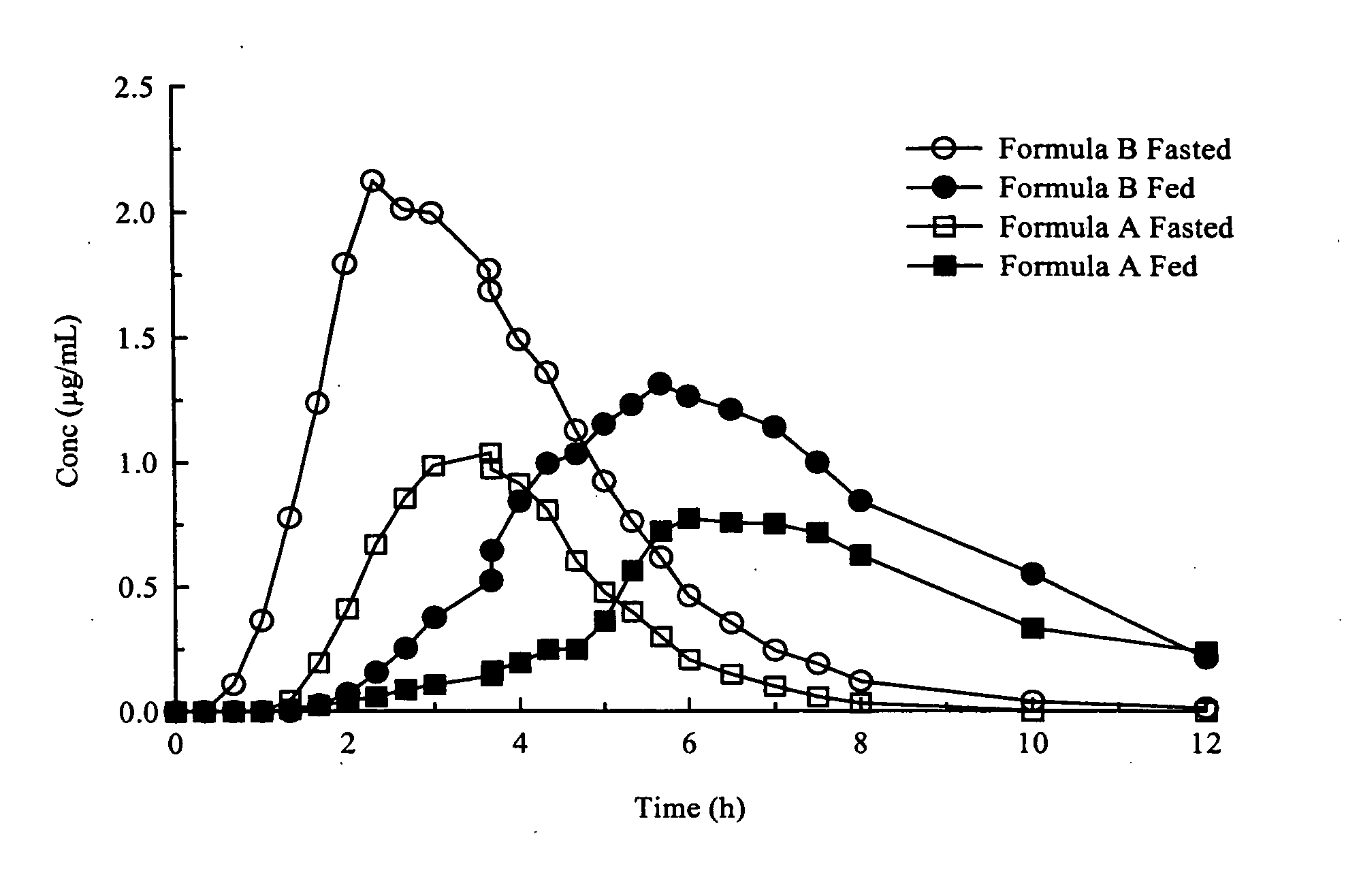Enhanced absorption of modified release dosage forms
a technology of modified release and absorption, which is applied in the direction of capsule delivery, microcapsules, active ingredients of heterocyclic compounds, etc., can solve the problems of preventing the effective formulation of such absorption inhibited active agents into the more desirable once-a-day products, affecting the absorption effect of the active agent, and the drug showing a reduction in the area under the curve (auc). , to achieve the effect of treating a bacterial infection
- Summary
- Abstract
- Description
- Claims
- Application Information
AI Technical Summary
Benefits of technology
Problems solved by technology
Method used
Image
Examples
example 1
[0045] A clinical study compared the administration of 250 mg of two delayed release multiparticulate compositions (Formula B and Formula A) of amoxicillin in the fed and fasted states. This study revealed an unexpected increase in AUC, and hence an increase in bioavailability, in the fed condition, while providing extension of Tmax. The current scientific literature reports either a negligible or a negative food effect for amoxicillin, so the increase in absorption was particularly unexpected. The formulations consisted of a pelletized product with a pH dependent coating to provide a delayed release. The manufacturing procedure for each formulation is described below:
[0046] Formula B and A pellets are manufactured by first creating a core pellet containing amoxicillin trihydrate. The core pellet is made by creating a wet powder mass by first blending in a suitable planetary or high shear mixer a powder mix consisting of 77% amoxicillin trihydrate powder, 6% avicel PH101, 4% Ac-di-...
PUM
| Property | Measurement | Unit |
|---|---|---|
| time period | aaaaa | aaaaa |
| molecular weight | aaaaa | aaaaa |
| molecular weights | aaaaa | aaaaa |
Abstract
Description
Claims
Application Information
 Login to View More
Login to View More - R&D
- Intellectual Property
- Life Sciences
- Materials
- Tech Scout
- Unparalleled Data Quality
- Higher Quality Content
- 60% Fewer Hallucinations
Browse by: Latest US Patents, China's latest patents, Technical Efficacy Thesaurus, Application Domain, Technology Topic, Popular Technical Reports.
© 2025 PatSnap. All rights reserved.Legal|Privacy policy|Modern Slavery Act Transparency Statement|Sitemap|About US| Contact US: help@patsnap.com

